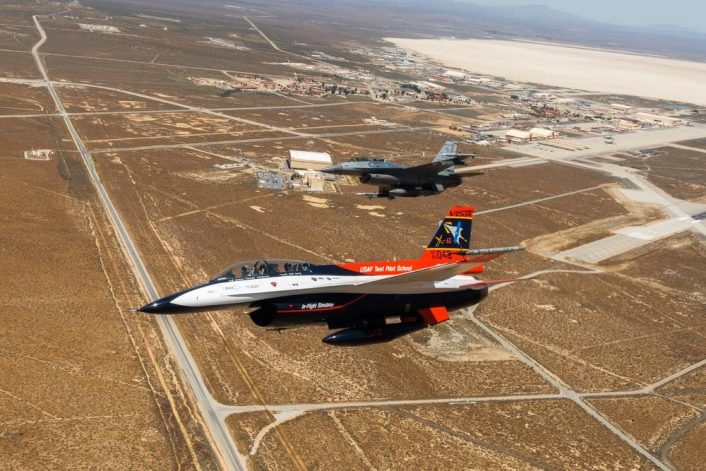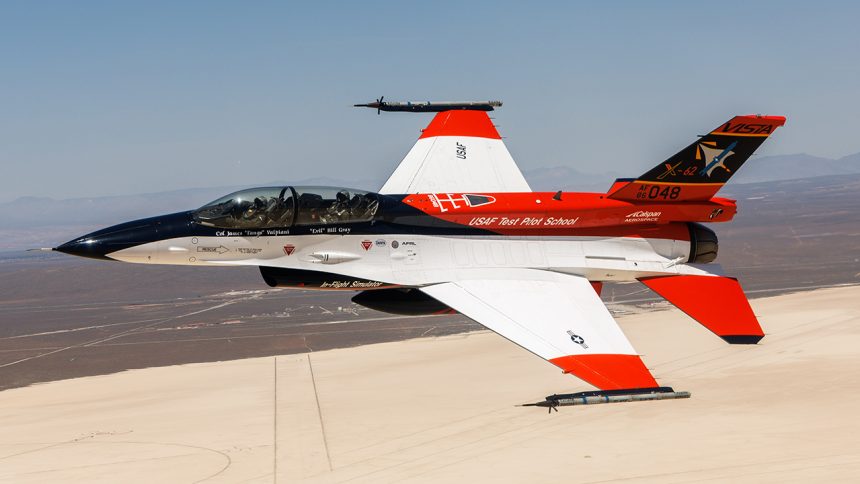Secretary of the Air Force flew aboard the X-62A VISTA to gain a firsthand experience of this unique aircraft. The X-62A VISTA integrates machine learning and specialized software to explore autonomous flight capabilities and other advanced technologies.
On May 2, 2024, Secretary of the Air Force Frank Kendall flew in the front seat of the X-62A VISTA. The purpose of the flight was “to experience firsthand the unique aircraft, which incorporates machine learning and highly specialized software to test autonomous flying and other cutting-edge capabilities.”
“The potential for autonomous air-to-air combat has been imaginable for decades, but the reality has remained a distant dream up until now. In 2023, the X-62A broke one of the most significant barriers in combat aviation. This is a transformational moment, all made possible by breakthrough accomplishments of the ACE team,” Kendall said in a public release.
During Secretary Kendall’s flight aboard the X-62A, the aircraft executed a range of tactical maneuvers while live agents responded in real-time to simulated threats. The flight involved completing specific test points within an aerial dogfight scenario to validate models and assess performance. Throughout the entire test flight, neither Secretary Kendall nor the safety pilot in the backseat touched the controls of the X-62A, demonstrating the autonomous capabilities of the aircraft.
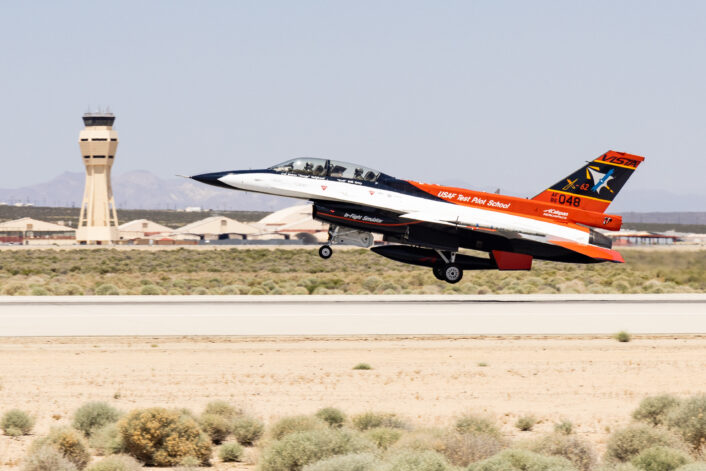
The U.S. Air Force Test Pilot School’s research division oversees the comprehensive program management for the X-62A, with a primary focus on advancing multidomain capabilities for the warfighter through innovative research and rapid technology testing.
Approximately four years ago, the team embarked on enhancing the unique capabilities of VISTA, which historically simulated the flight characteristics of other aircraft. However, they aimed higher by introducing a groundbreaking capability not previously seen in the Department of Defense. Recognizing the potential, they transformed VISTA into a platform for integrating and testing artificial intelligence theories using live agents in real-time scenarios.
The initial capabilities of VISTA underwent a significant transformation, culminating in a comprehensive upgrade completed in 2022. This upgrade introduced three new highly specialized software suites with enhanced computing power, enabling advanced AI applications.
“AI is really taking the most capable technology you have, putting it together and using it on problems that previously had to be solved through human decision making. It’s automation of those decisions and it’s very specific,” explained Secretary of the Air Force Frank Kendall.
X-62A VISTA
The NF-16 VISTA started life as a F-16D Block 30 which later received numerous upgrades and modifications, including the VISTA Simulation System (VSS) provided TPS students the ability to experience various flying conditions including simulation of other aircrafts’ characteristics. In preparation for the X-62’s participation in Skyborg autonomous flight tests with the Air Force Research Laboratory, the VSS is now complemented by a new system called the System for Autonomous Control of Simulation (SACS) to support autonomy testing.
Last year, the Air Force announced that Artificial Intelligence agents successfully piloted the X-62A during a total of 12 flights in December 2022. The test campaign involved two AI agents, the AFRL’s Autonomous Air Combat Operations and the Defense Advanced Research Projects Agency’s Air Combat Evolution, each performing in different roles.
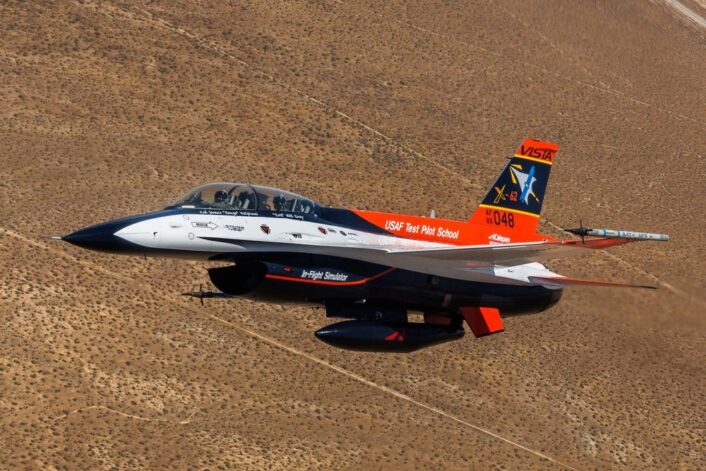
In fact, while the AACO’s AI agents performed one-on-one beyond-visual-range (BVR) engagements against a simulated adversary, the ACE’s AI agents performed within-visual-range maneuvering, also known as “dogfighting”, against constructive AI red-team agents. Both teams’ AI agents executed autonomous tactical maneuvering while maintaining real-world airspace boundaries and optimizing aircraft performance.
Recently, the U.S. Air Force Test Pilot School and the Defense Advanced Research Projects Agency announced that last year the X-62 VISTA was successfully flown by an Artificial Intelligence agent during a simulated dogfight against a human pilot on an F-16 as part of DARPA’s Air Combat Evolution (ACE) program.
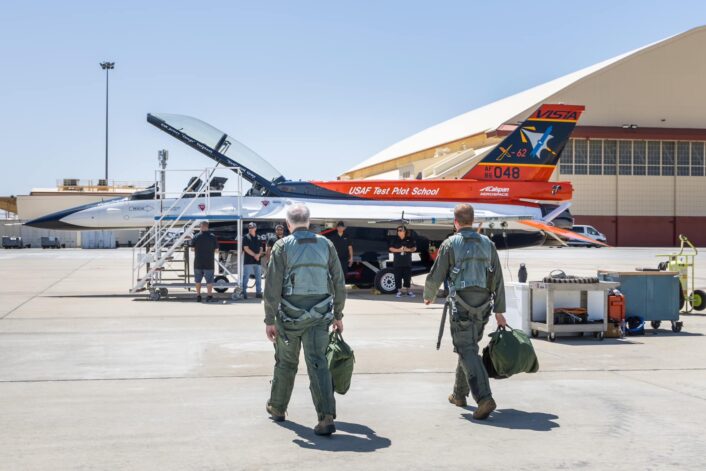
The press release did not disclose when the testing happened, however, since it mentioned the teams went from the initial installation of live AI agents into the X-62A’s systems to the demonstration in less than a calendar year, it’s possible it happened between summer and fall 2023. The Air Force acknowledged that the first flights of the X-62 controlled by AI agents were performed in December 2022.
The testing happened in the airspace above Edwards Air Force Base, California. Initial flight safety was built up first using defensive maneuvers, according to the info released, before switching to offensive high-aspect nose-to-nose engagements where the dogfighting aircraft got as close as 2,000 feet at 1,200 miles per hour. In total, the team made over 100,000 lines of flight-critical software changes across 21 test flights.
